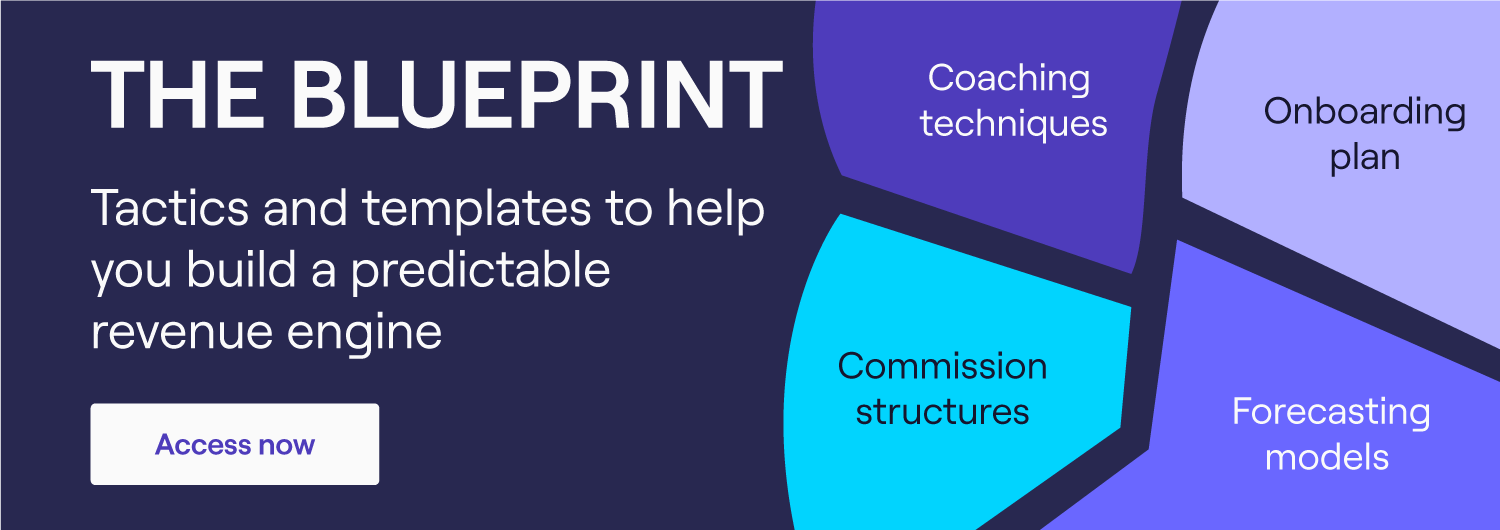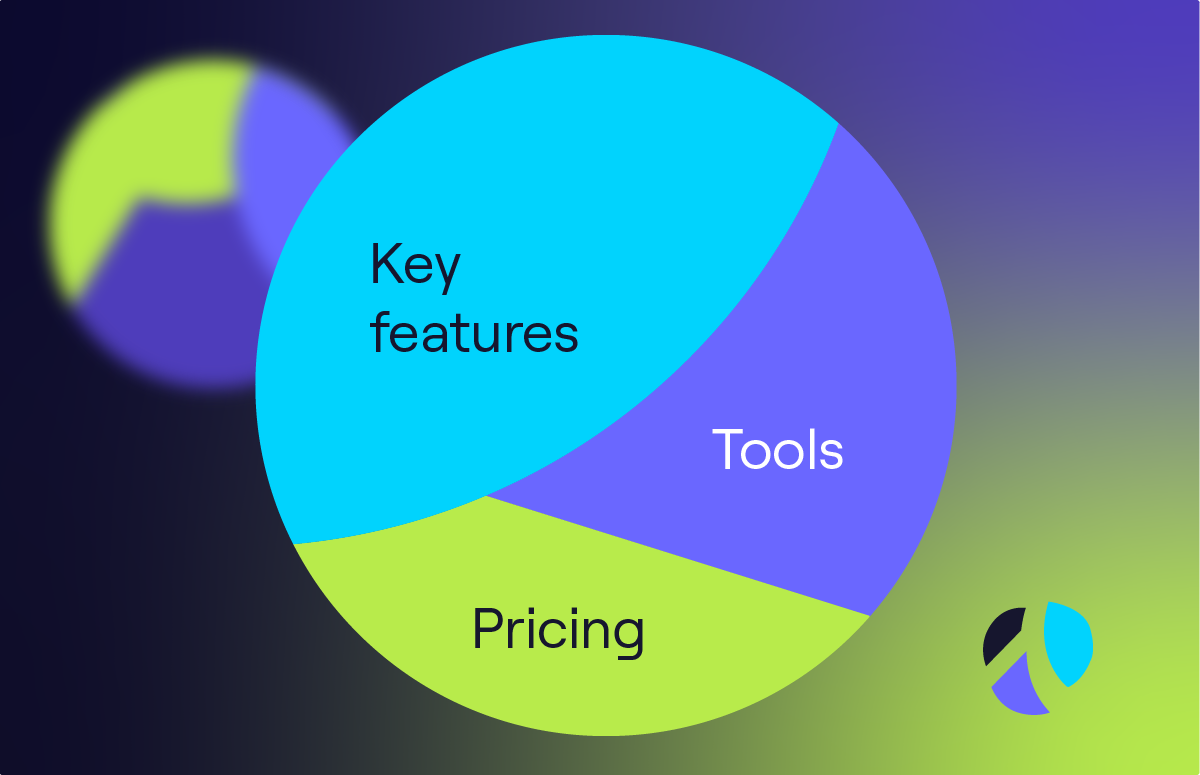What is Sales Enablement? The Ultimate Guide
Have you ever wondered what sets high-performing sales teams apart from the rest? It’s all due to sales enablement.
But what is sales enablement? And why is it so valuable?
In this article, we’re diving into the concept of sales enablement. You’ll learn its meaning, explore its game-changing strategies, and uncover how it could be the secret ingredient your business has been craving for sales success.
Scroll 👇 for more!
Sales enablement: a definition
Sales enablement is the process of providing your sales team with the resources they need to close more deals.
The resources can take many forms, but generally, they’re tools that improve workflows or content that provides knowledge about effectively selling a product/service.
Why is sales enablement important for sales?
In today’s modern business landscape, sales enablement is crucial in maximising a company’s sales potential.
Since B2B technologies and customer expectations evolve over time, sales enablement ensures that your sales team is adaptable and well-equipped with the proper knowledge and skills.
The primary goal of sales enablement is to boost the productivity and effectiveness of your sales reps. Equipping them with the right marketing tools, information, and training empowers them to engage with customers more effectively throughout the entire sales cycle. This leads to increased conversion rates and sales.
Think of sales enablement as a GPS guiding your sales reps through a complex journey, ensuring they never lose their way. With compelling content, targeted training, and modern technology, you’ll empower your sales team at every stage of the buyer’s journey.
In fact, 76% of companies that implemented sales enablement see an increase in sales between 6% to 20%.
So, if you’re struggling to succeed at sales, why wouldn’t you want to give sales enablement a try?
Why is sales enablement important for marketing?
Sales enablement isn’t just about generating more revenue; it’s also about fostering collaboration between marketing and sales, combining their efforts, and providing a seamless experience for your customers.
You may wonder how sales enablement aligns sales and marketing efforts. For both teams, it’s pivotal that their content and messaging are consistent and align with the company’s goals.
Why does sales enablement matter in B2B?
B2B sales deals are often complicated and involve multiple decision-makers and stakeholders. Sales enablement is a powerful solution for managing this process.
With sales enablement, your sales team will gain a deep understanding of your offerings, will be able to predict and address customer objections, and approach the unique needs of each prospect.
By providing your salespeople with the right tools, insights, and support, you ensure they can navigate the complex B2B landscape with finesse.
Why is technology pivotal for sales enablement?
It’s also worth mentioning that technology is significant in sales enablement. One technology that can make a real difference in your sales reps’ lives is a good Customer Relationship Management (CRM) system. It helps to manage customer data, track all customer communications, and nurture relationships with their leads and clients.
Other sales automation tools can streamline your sales rep’s more routine tasks, allowing them to focus on more complex tasks. Among those tools are communication tools and virtual selling platforms that facilitate seamless interactions with customers, regardless of where they physically are.
Also, leverage integration solutions to connect your CRM and other sales tools; they ensure a smooth flow of information and insights. The integration boosts the efficiency and effectiveness of your sales enablement efforts, providing your sales reps with the technology they need to perform better and contribute to your business’s growth.
The 3 benefits of sales enablement
As we’ve already mentioned, sales enablement comes with many benefits. Scroll 👇 to see them.
1. Increases efficiency
Time is precious, and salespeople might feel highly overwhelmed with tasks. However, with sales enablement, sales teams can access everything they need to close deals effectively.
When equipped with the right tools, sales teams work more efficiently. There’s no need for manual updates, as sales enablement data can be easily integrated with CRM and DAM systems.
Besides, automation allows sales teams to focus more on selling than data management.
2. Empowers sales reps
A sales enablement program makes sales team leaders feel more motivated and confident, which directly affects the teams they lead.
With sales enablement, sales reps are empowered and use the knowledge, content, and tools they’ve been provided with to make sales more effective.
3. Contributes to content creation
Informative and useful content is an integral part of sales enablement.
A good example of sales enablement content is cold call scripts. It can also include reports, presentations, and so on. It could even include billboard ads with compelling messages.
With customised content, sales reps can be more agile, allowing them to guide customers through the B2B buyer’s journey.
The 6 elements of a great sales enablement strategy
Follow these steps to implement sales enablement at your company 👇
1. Align sales and marketing
Nowadays, it’s crucial for sales and marketing to work closely together. How these two departments cooperate highly impacts a company’s success or downfall.
In the past, sales and marketing teams used to operate independently, each with its own objectives and methods. However, the way consumers engage with businesses now calls for a more solidified approach. Sales and marketing must team up to ensure that customers have a consistent and seamless experience from the first interaction to the final purchase.
When sales and marketing collaborate, the benefits are manifold. Marketing gets invaluable insights from sales about customers’ needs and pain points. On the other hand, sales benefits from marketing’s data-driven strategies, which enable them to identify high-potential leads and optimise the sales funnel.
Together, these teams create a synergy that improves efficiency and generates a deeper understanding of the customer.
Think about alignment like this:
Have you ever come across a situation where a potential customer gets mixed messages from different parts of your business?
When your messages aren’t aligned, your customers will feel confused. By making sure that the messages from your sales and marketing teams match up, you present a unified front that strengthens your brand’s identity and the value it provides to customers.
But what does creating a consistent message involve? It involves crafting a storyline that resonates with your intended audience across all touchpoints.
Whether you launch an email campaign, a social media post, or a sales presentation, the words, tone, and everything else should all fit together seamlessly.
This is the only way to build trust and ensure that potential customers get a clear and convincing message, boosting the chances of them becoming paying and loyal customers.
To make the alignment between sales and marketing more effective, follow these tips 👇
- Set common objectives for both teams to work towards.
- Hold regular meetings and check-ins; keep your lines of communication open and engage with each other.
- Create a detailed ideal customer profile for content creation and target audience engagement.
- Encourage feedback loops where sales and marketing teams can share insights on lead quality and content effectiveness.
- Provide ongoing training on product knowledge and market trends to enrich the teams’ knowledge and expertise.
- Use a CRM system to share information seamlessly.
- Build a culture of respect for each team’s expertise; recognise each team’s unique contributions to the sales process.
- Encourage your sales and marketing teams to monitor key performance indicators, analyse data, and define areas of improvement for constant improvement.
- Regularly evaluate the impact of your efforts on sales outcomes and refine strategies accordingly.
2. Map out the buyer’s journey
Understanding the buyer’s journey is crucial for effective sales enablement.
When you know every single detail about your target audience’s journey, you can craft sales enablement strategies that address their specific needs and challenges at each stage. So, without a deep understanding of the buyer’s journey, your efforts may fall flat.
Mapping out the buyer’s journey allows you to learn the key touchpoints where sales enablement can make a big impact. Whether it’s providing educational content during the awareness stage or offering personalised solutions during the decision-making stage, aligning your sales enablement strategies with the customer’s journey ensures that you meet their needs every step of the way.
Besides, when you provide relevant and valuable information that directly speaks to their pain points, you position yourself as a trusted advisor. This allows you to build trust and maximises your chances of successfully closing deals.
Here are some tips for mapping out the buyer’s journey 👇
- Break down the customer journey into phases like awareness, consideration, decision, and post-purchase. Understand their needs and actions at each stage.
- Collect qualitative and quantitative data to learn customer behaviours, preferences, pain points, and touchpoints. Conduct surveys or use website analytics to learn about your customers.
- Identify all the main channels your customers use to interact with your brand (both online and offline).
- Leverage automation tools to distribute personalised content and messages based on customer behaviour and preferences. For instance, you can use email automation to send follow-up emails based on the actions customers take on your site, such as downloading an eBook.
- Use customer feedback to improve the customer journey map and enhance its accuracy over time.
- Constantly update the customer journey map in line with changing market trends and customer behaviours.
3. Develop targeted sales content
In B2B, everybody knows that content is king.
Creating targeted and compelling sales content can make all the difference when it comes to grabbing the attention of prospects and guiding them through the buyer’s journey.
You may wonder how to craft content that grabs attention. First, you must deeply understand your B2B target audience and their journey. Learn what challenges they’re facing. What questions do they need answers to?
By diving into the mindset of your potential customers, you can create content that resonates on a personal level, positioning your brand as an authority in your industry.
Your prospects have unique needs and priorities at each stage of their buyer’s journey. Tailoring your content to address these needs ensures that you deliver value at every touchpoint, nurturing leads and building rapport.
For example, let’s consider a software company specialising in project management tools:
In the awareness stage, they could create blog articles and infographics explaining common project management challenges that businesses face. This content might include topics like “Top 5 Challenges in Team Collaboration” or “Streamlining Project Workflow: A Beginner’s Guide.”
These resources educate their audience about pain points they may not even realise they have.
Once you’ve gained insights into your audience’s journey, start crafting compelling sales collateral. This could be anything from brochures and presentations to case studies and whitepapers. The key is to create relevant, engaging, and visually appealing content.
By aligning your content with the specific needs of each sales stage, you increase the chances of capturing your audience’s interest and guiding them towards a purchase decision.
4. Invest in continuous training and skills development
In the fast-paced and ever-evolving world of sales, one truth stands tall: the only constant is change.
To keep your sales team at the top of their game, you should invest in continuous training and skills development.
Let’s imagine a software company has introduced a revolutionary new product to the market. This product utilises AI to enhance UX.
To ensure their sales team is prepared for this shift, the company should organise regular training sessions on the intricacies of AI technology, its applications in various industries, and how it aligns with the company’s overall vision.
This ongoing training can equip sales professionals with the knowledge they need to confidently address customer issues about the product’s capabilities and communicate its benefits/value proposition.
5. Use sales technology and tools
Using cutting-edge sales technology and tools isn’t just a choice - it’s a must. The right tools can be a game-changer for your sales enablement efforts.
Let’s explore the best sales enablement tools 👇
Content creation and management tools
It’s crucial to deliver the right message at the right time. This is where content creation and management tools come in handy. They help sales teams curate, organise, and share valuable content that resonates with prospects.
Here are some examples:
Showpad
A powerful tool that revolutionises content creation and management in sales enablement. It allows sales teams to engage buyers effectively throughout their journey.
With Showpad, salespeople can easily access and share relevant content at every stage of the buyer’s journey.
HubSpot
Another great sales enablement tool with a user-friendly interface. HubSpot allows sales teams to easily create and customise content tailored to their target audience.
From blog posts and email campaigns to landing pages and social media updates, HubSpot empowers sales professionals to effectively engage with prospects at every stage of the buyer’s journey.
Communication and collaboration platforms
In sales, effective communication is vital for maintaining successful relationships.
For effective communication, you need reliable channels. A client portal is a great solution if you want to enhance the efficiency of your sales communication, ensuring that both you and your clients have easy access to the necessary information.
Other effective communication channels are email and instant messaging; the essential tools in this category include:
Asana
A powerful tool that streamlines communication and collaboration in sales enablement.
Asana provides a centralised platform for task management, file sharing, and progress tracking. It improves team productivity and efficiency.
Slack
With Slack, sales teams can create separate channels for different prospects or projects.
It allows salespeople to seamlessly communicate with team members and potential customers, streamlining the sales process and keeping everyone on the same page.
Analytics and reporting solutions
The phrase “knowledge is power” couldn’t be truer in the context of sales enablement.
Analytics tools provide data-driven insights and enable your sales specialists to make informed decisions and optimise your strategies.
Additionally, with analytics tools, you can easily track website interactions and email campaign performance, as well as identify patterns in customer behaviour.
Some powerful analytics platforms include:
Salesforce Sales Cloud
This comprehensive CRM system offers robust analytics features that provide detailed information about customer behaviour and sales trends.
Armed with data from the Salesforce Sales Cloud, sales reps can make more informed decisions and close more deals.
Gong
This tool records and analyses sales calls. Sales teams use Gong to extract valuable insights to help refine sales strategies and enhance communication skills.
6. Measure and refine sales enablement efforts
It’s not enough to implement sales enablement and leave it there.
The true magic lies in the constant measuring, analysing, and refining of those efforts. You must ensure your sales enablement initiatives remain effective, efficient, and aligned with your business goals.
Let’s find out how to measure and refine your sales enablement efforts 👇
To evaluate the success of your sales enablement initiatives, you need to set clear and relevant sales KPIs. These metrics serve as your compass and guide you towards a deeper understanding of how your strategies are performing.
KPIs can vary based on your specific objectives, but they usually include metrics such as:
- Conversion rates.
- Lead-to-customer ratio.
- Sales cycle length.
- Revenue generated.
For B2B companies, tracking metrics such as customer acquisition cost (CAC), customer lifetime value (CLTV), and sales pipeline velocity also provides valuable insights.
Customer acquisition cost (CAC) is how much it costs to get a new customer, factoring in expenses, including marketing campaigns, sales team salaries, and overhead.
Customer lifetime value (CLTV) measures the total value a customer brings to the company over their entire engagement. This helps to make decisions regarding customer retention and loyalty programs.
Sales pipeline velocity measures the speed at which leads move through the sales pipeline, indicating the efficiency of the sales process. A higher velocity is excellent, whereas a slower velocity might point towards potential drawbacks or areas for improvement.
Additionally, monitoring metrics related to customer satisfaction, like Net Promoter Score (NPS) and customer feedback, can help you understand the quality of the customer experience.
Keep in mind the goal is to be flexible. Sales enablement isn’t something fixed - it’s a dynamic journey that needs ongoing growth and improvement. By observing the data and experimenting with new things, you’ll improve your plans in ways that bring satisfying outcomes.
3 common sales enablement challenges
1. Newly hired salespeople underperform after training
One challenge in sales enablement is the poor performance of newly hired salespeople after training. Even though they’ve received comprehensive training, they may struggle to meet their targets.
There are several factors contributing to this issue. Firstly, the learning process for salespeople can be challenging, as they need time to get familiar with the company’s products or services, understand the target market, and learn the best selling techniques.
A lack of ongoing support and coaching for new hires is another factor that contributes to the issue. After their initial training, they should receive sufficient guidance and feedback so they can refine their skills and address any weaknesses.
Moreover, it’s essential to understand if the training itself adequately prepares new salespeople for real-world scenarios. If the training isn’t valuable, it won’t fully equip salespeople for success in actual sales situations.
How to overcome this challenge
- Implement ongoing coaching and mentoring programs for newly hired salespeople.
- Conduct regular performance assessments and feedback sessions.
- Incorporate more hands-on exercises during training to simulate real-world selling.
2. Sales and marketing teams aren’t on the same page
The lack of alignment between sales and marketing teams is yet another common sales enablement challenge.
When marketing and sales teams aren’t on the same page, it often leads to poor communication, inefficiencies, and missed opportunities. This can become a huge problem when trying to understand customer needs and preferences.
How to overcome this challenge
- Foster collaboration between sales and marketing teams through regular communication (online and offline).
- Give sales and marketing shared goals.
3. Your content doesn’t resonate with your target audience
Creating content that resonates with the target audience is another sales enablement challenge. If your content fails to address your customers’ needs, interests, and pain points, it won’t engage or convert potential customers.
How to overcome this challenge
- Conduct thorough market research.
- Survey your customers and analyse data from previous sales interactions.
- Gather feedback from your sales team and recorded calls.
Successful sales enablement examples
Sales enablement is a critical aspect of any successful business, and many famous companies and brands have implemented effective strategies to empower their sales teams.
One of those companies is FedEx, the famous American brand providing transportation, e-commerce, and business services.
The company implemented a sales enablement program, which resulted in an 88% improvement in content efficiency. It also improved buyer engagement by 22% and publisher productivity by 60%.
Another famous company that implemented a sales enablement program is Sprout Social, a social media management tool for agencies and companies of all sizes.
Thanks to sales enablement, Sprout Social achieved a 99% adoption rate of sales plays and improved content efficiency by 90%.
Sales enablement: the last word
Sales enablement isn’t a temporary trend; it’s a deep shift in how we look at the art of selling.
From aligning the sales and marketing teams to using sales tech wisely and upskilling sales reps, every part of sales enablement is designed to improve your team’s performance.
By providing sales reps with the right tools, knowledge and content, sales enablement boosts efficiency, encourages teamwork, and ultimately leads to exceptional results.
The time to get moving is now. We’ve shared valuable insights in this guide; now it’s time to think about your company’s challenges.
Get your teams in the loop, organise meetings, and kick-off the process of using effective sales enablement today.



